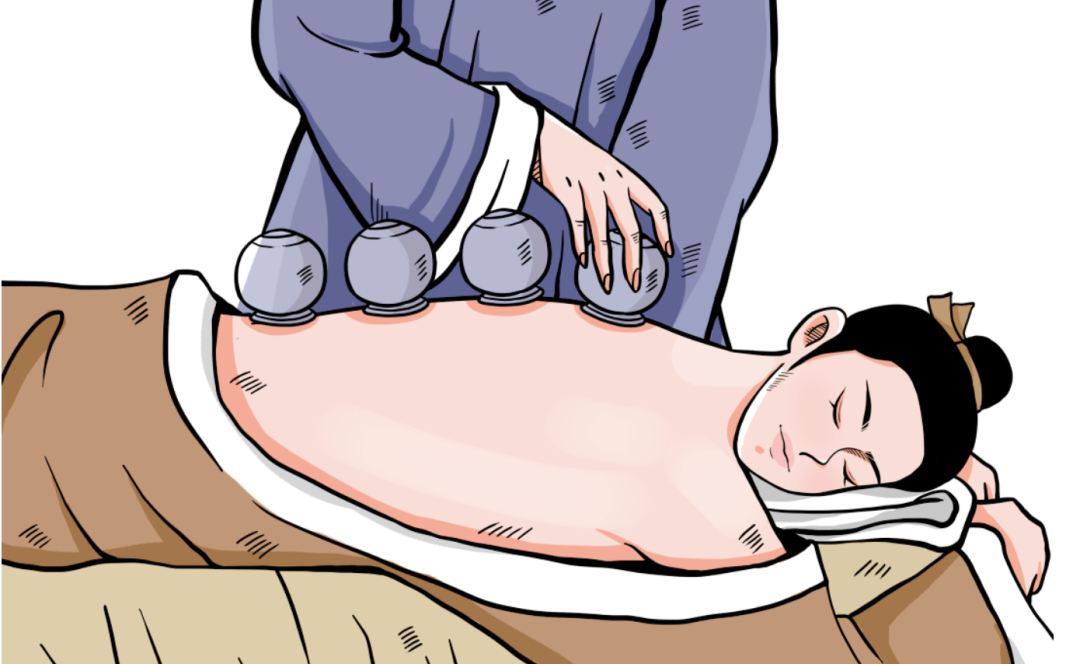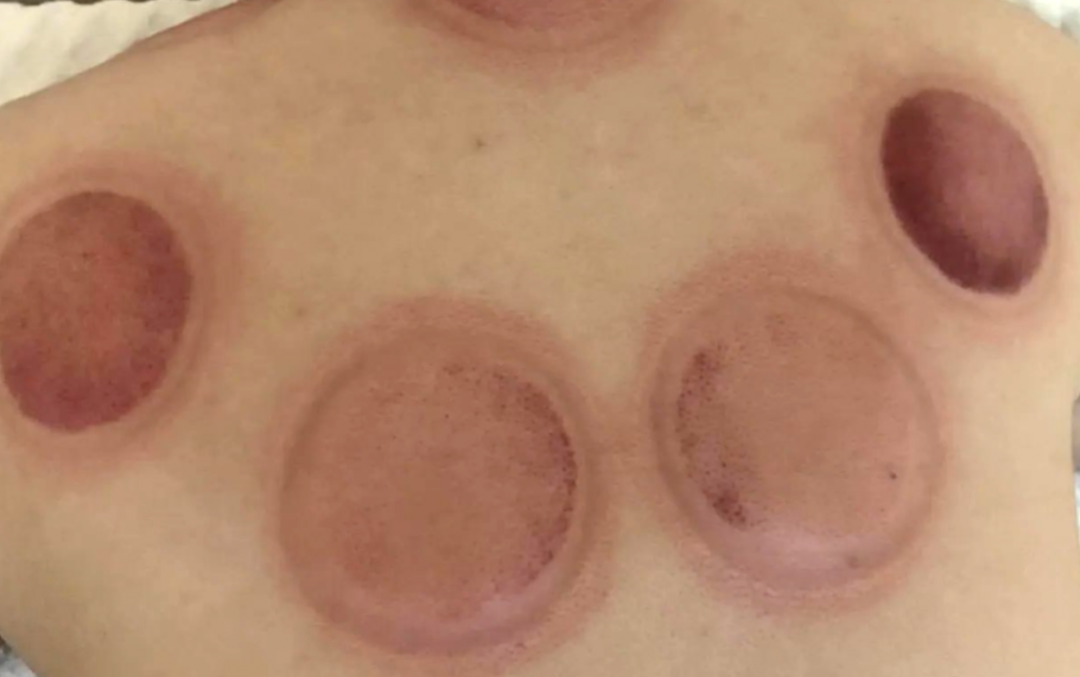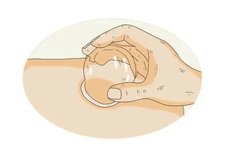
Cupping therapy, also known as suction therapy, utilizes cups as tools to expel air through methods such as burning, suction, and compression, creating a negative pressure that adheres to acupuncture points (腧穴, shùxué) or corresponding areas of the body. This generates stimulation, causing local skin congestion and bruising to achieve therapeutic effects. Cupping therapy is one of the commonly used treatment methods in Traditional Chinese Medicine (TCM).

Image source: Internet
Cupping Methods
1. Retention cupping (留罐法, liúguànfǎ), also known as stationary cupping, involves placing the cup on the skin and leaving it in place for a duration determined by the skin’s reaction and the patient’s constitution. This method is commonly used for various ailments and can involve single or multiple cups.
2. Sliding cupping (走罐法, zǒuguànfǎ), also known as gliding cupping, involves applying a layer of lubricant on the skin or the rim of the cup before suctioning. The practitioner then moves the cup back and forth over the treatment area until the skin becomes red and congested, at which point the cup is removed.
3. Flash cupping (闪罐法, shǎnguànfǎ) involves quickly placing and removing the cup multiple times until the skin becomes red and congested. This method is particularly useful for localized numbness, pain, or functional impairment, especially in areas where retention cupping is not suitable, such as the face of children or young women.
4. Bloodletting cupping (刺血拔罐法, cìxuè báguànfǎ) involves disinfecting the skin and using a three-edged needle to prick the skin to induce bleeding before applying the fire cup to enhance the therapeutic effect. The amount of bleeding and duration of cupping depend on the condition. This method is often used for heat syndromes, excess conditions, blood stasis, and certain skin diseases such as neurodermatitis, acne, erysipelas, sprains, and breast abscesses.
5. Needle cupping (留针拔罐法, liúzhēn báguànfǎ), abbreviated as needle-cup, involves placing the cup over the area where needles are retained for about 5-10 minutes. Once the skin is red and congested, the cup is removed, and the needles are withdrawn. This method combines the effects of acupuncture and cupping.

Image source: Internet
When performing cupping, it is essential to select appropriately sized cups based on the treatment area and to avoid burning the patient’s skin. During the retention phase, the practitioner should monitor the patient closely to prevent blistering. Cupping is contraindicated in areas with skin allergies, ulcers, or edema, as well as on the abdomen and lower back of pregnant women.
Effects and Indications of Cupping
Cupping therapy has various effects, including promoting circulation (通经活络, tōngjīng huóluò), invigorating qi and blood (行气活血, xíngqì huóxuè), reducing swelling and alleviating pain (消肿止痛, xiāozhǒng zhǐtòng), and dispelling wind and cold (祛风散寒, qūfēng sànhán). Its applications are broad, commonly used for conditions such as wind-cold-damp bi syndrome (风寒湿痹, fēnghán shī bì), low back and shoulder pain, joint pain, soft tissue sprains, colds, headaches, coughs, asthma, stomach pain, vomiting, abdominal pain, dysmenorrhea, stroke sequelae, and blood stasis. Additionally, it can be used for preventive health care and fatigue relief.
Post-Cupping Reactions
1. Normal reactions include the appearance of small purple-red spots or bruises at the suction site, often accompanied by mild warmth or pain, commonly referred to as cupping marks (罐斑, guànbān) or cupping impressions. These typically resolve on their own within 1-2 days.

Image source: Internet
2. Pathological reactions may include bright red cupping marks, which are often seen in yang conditions, heat syndromes, or excess conditions; dark red marks indicate yin conditions, blood stasis, or cold syndromes. If the marks are red or light purple with blisters, this suggests dampness or cold dampness; yellow fluid indicates damp-heat; red or black blisters suggest chronic dampness with blood stasis; deep purple marks indicate blood stasis; deep purple-black marks that are painful and accompanied by fever suggest heat toxin and stasis; marks without color change and cool to the touch indicate deficiency-cold; itchy marks or those with skin lines suggest wind invasion; pale marks or blisters indicate deficiency conditions; deep red indicates heat, while blue indicates cold stasis. Marks that show no change suggest a mild condition or nearing recovery. These reactions should be analyzed in conjunction with the clinical situation.
Precautions for Cupping
1. During cupping, movements should be steady, precise, gentle, and quick. The patient should be in a comfortable position and should not change positions after cupping. When using multiple cups, ensure they are spaced adequately apart, and avoid pressing on needle handles during needle cupping. If pain occurs during retention, reduce pressure or remove the cup immediately; do not pull or twist the cup forcefully to avoid pain or injury.
2. Choose appropriate positions and areas with sufficient muscle for cupping. Improper positioning, movement, uneven bony areas, or excessive hair can cause the cup to fall off, making it unsuitable for treatment.
3. Select cups of appropriate size based on the area being treated.
4. When using fire cups, take care to avoid burns. If burns occur or blisters form from prolonged cupping, small blisters do not require treatment other than covering with sterile gauze to prevent rupture. For larger blisters, use a sterile needle to drain the fluid, apply burn ointment, or cover with sterile gauze to prevent infection.
5. Cupping is contraindicated in areas with skin allergies, ulcers, edema, and major blood vessel distributions; it is also not suitable for patients with high fever and convulsions, as well as for the abdomen and lower back of pregnant women. Cupping is prohibited for conditions with spontaneous bleeding tendencies, high fever, or convulsions.
For safety, do not use fire cups at home; cupping should be performed under the guidance of a qualified practitioner.
Special Statement
In response to the national call for intellectual property protection, we make the following statement regarding the content published on the hospital’s WeChat public account:
1. We will credit the sources of articles, images, and videos when known.
2. For articles and images that do not consent to use, please contact us promptly, and we will delete them to prevent infringement. Contact number: 0531-87888501.
Hospital Media Center
Contributed by: Luo Qian
Edited by: Kang Xiujuan
Reviewed by: Zhang Longmin
Supervised by: Yu Shuwang
For more disease prevention and health knowledge consultation, please follow Pingyin County People’s Hospital WeChat public account

